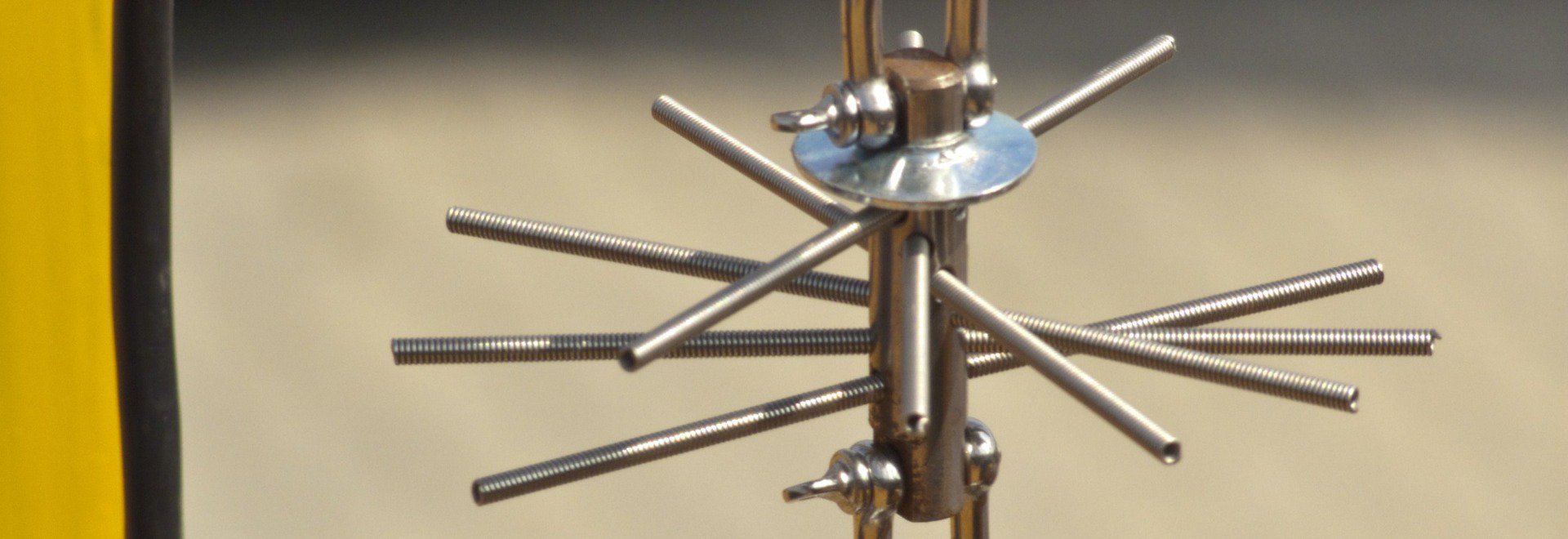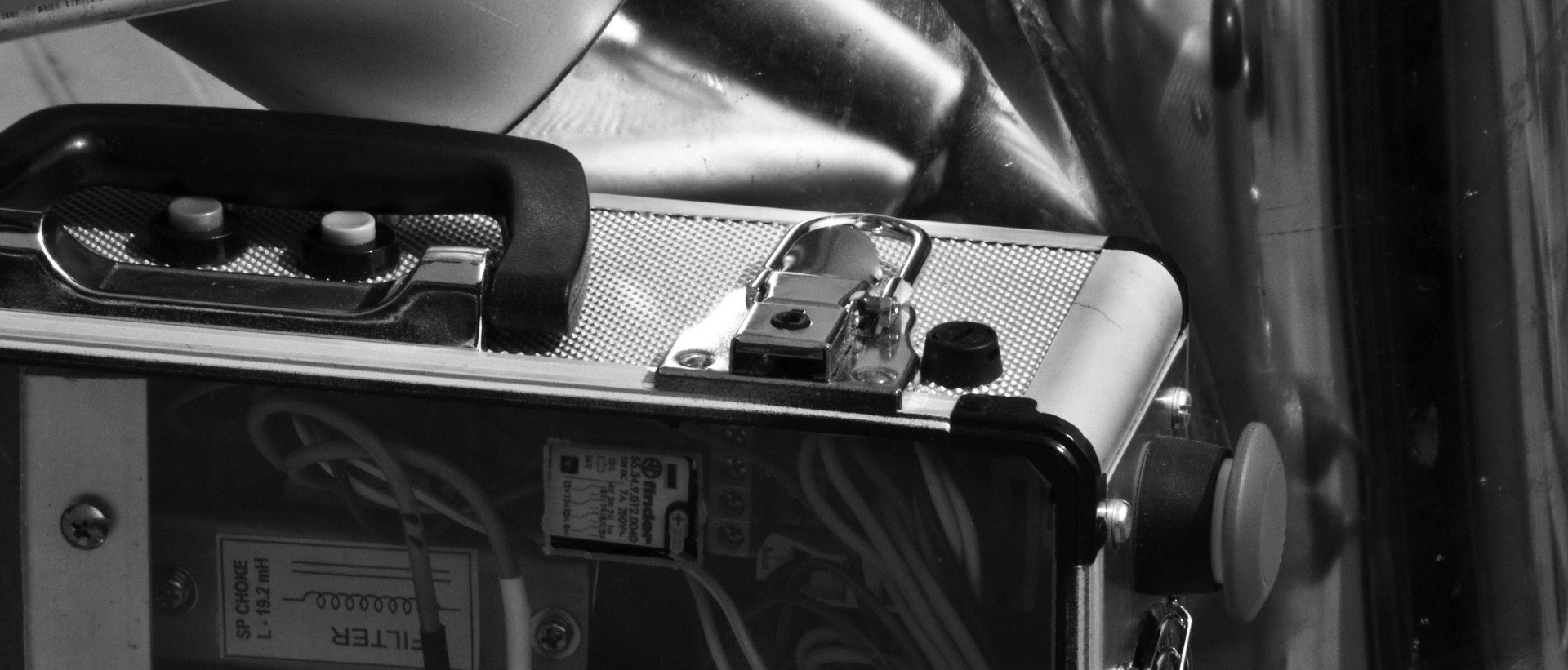The UNIDENSE® technology is a catalyst loading method for primary reformer tubes which is less complex and faster then the traditional "sock" loading method. Catalyst is slowly filled into the tube through a specially designed funnel and the loading rope is gradually pulled out of the tube as the catalyst layer builds up. The brushes with flexible springs reduce the speed of the catalyst particles so that breakage is avoided. With the UNIDENSE® technology the catalyst particles will have a free fall from the lowest brush to the catalyst surface. This gives a "low intensity" filling and the particles will come to rest before being interlocked by other particles. Hence, there will not be any risk for bridging, and vibration of the tubes is not necessary. The UNIDENSE® technology ensures a filling without extra voids and a high uniform density along the full length of the tubes is obtained. The catalyst is charged from buckets and the time consuming and expensive socking of the catalyst is avoided. Weighing of catalyst loaded in each tube is not necessary.
Several layers of catalyst
When more than one type of catalyst is to be loaded in the tubes with the UNIDENSE® technology the level for each type is easily adjusted by marks on the loading rope, and frequent measurement of loaded outage is therefore not necessary. Experience from an emergency loading with 5 different types (shapes and sizes), including used and screened catalyst, concluded that the final pressure drop variation was less than ± 5 %. All common catalyst types and sizes have successively been loaded.
Pressure drop variation
The guaranty for the variation in pressure drop measurement of the loading is that the final result shall be within ± 5% of the average. However, a variation of ± 3% or less is a realistic target when a careful loading has been made. The pressure drop is normally measured with the plant's own equipment and personnel as a quality control, and is normally taken during night in order to minimize variations in temperature and barometric pressure.
High uniform density - Less settling of catalyst during operation
With the UNIDENSE® technology it is often experienced that more catalyst (3 to 7%) is loaded than with the "sock" method and normal vibration. This is due to the uniform packing of the catalyst. The increase in density does not result in increased pressure drop in the reformer as normally should be expected. The explanation to this is that "sock" loading and vibration results in spots with locally very compact and high density, causing increased pressure drop. The Unidense® loaded density is uniform all through the tube and high enough to avoid settling of the catalyst during operation. Experience from one plant with many starts and stops, is that the settling of the catalyst was even and only a few inches in all the tubes.
About the "Sock" loading method
The traditional "sock" loading method results in a loose filling. When the catalyst flushes out of the sock this will be a "high intensity" filling and the catalyst particles may (will) interlock and form bridges. Vibration will remove some of the bridges and increase the density. After the plant is started, the tubes will expand and some bridges may break and cause settling of the catalyst and possibly new bridges and hot spots. When vibration is used on the top of the tube it is obvious that the effect of the vibration in the lower/bottom part of the tube will be less. The experience is that settling of the catalyst after a "sock" loading has been to such an extent, that the catalyst level has been inside the heated zone and resulted in overheating of the top part of the tubes.
Benefits with the UNIDENSE® technology
Socking of catalyst and weighing of the socks prior to loading is time consuming and is avoided with the UNIDENSE® technology. However, the catalyst has to be brought to the tubes, and there is a good experience with transfer of the catalyst in bags with up to approx. 30kg. Bagging of the catalyst is much faster than filling a large number of socks and only a few bags need to be weighed. Also there is very good experience by using hoppers and charging the catalyst directly in buckets which is carried to the tubes.
The UNIDENSE® technology is a fast loading method. The actual time for loading a tube with UNIDENSE® vary, depending on the tube dimensions and is for a 4" i.d. tube approx. 10 minutes (one of catalyst type) including the final outage measurement. A reformer with 300 to 400 tubes is normally completed in 3 to 4 shifts of 12 hours. The time it takes to complete a reformer loading with the UNIDENSE® technology is often less than half of the time for sock loading. Often the time to replace the primary reformer catalyst is the critical item in a maintenance plant stop and reducing the down time is the owner's main goal. Even using less man-hour for catalyst replacements is a great benefit.
Pressure drop of the tubes has proved to be within a narrow range with the majority within ± 2,5% variation around the average pressure drop. Rarely tubes have pressure drop outside of ± 5%, and most of the reformers have been completed without reloading of tubes. Since reloading of tubes is avoided, less (no) expensive catalyst is wasted.
Often when a "sock" loading is made problems like loosing a part, or a full sock into the tube happens. Sometimes the sock opens during lowering into the tube and catalyst have free fall causing catalyst breakage. The way the vibration is made varies from team to team leading to large variations in loaded density and pressure drop. Adjustment of the loading by vibration and reloading of tubes is time consuming and may delay start up of the plant. Such or similar problems are avoided by the UNIDENSE® technology, and very seldom tubes need to be emptied and reloaded. We see only positive effects and no negative risks of using the UNIDENSE® technology compared with the "sock" loading method.
The even and stable pressure drop results in even tube wall temperatures and the high uniform loaded density will ensure a long life of the reformer tubes and allow for improved conversion and increased throughput. Using the UNIDENSE® technology contributes to extend operating periods.
In summary the main benefits of the UNIDENSE® technology
- No need for socking/weighing of catalyst - time and manpower saving prior to loading
- Catalyst delivered in drums / bags - lower costs (no socking costs)
- No need for vibration or hammering - no damage to tubes, insulation and structure
- Less risk for refilling of tubes - less problems during the loading and less waste of catalyst
- Uniform high loaded density and uniform pressure drop - prolonged tube life and potential for increased production
- No bridging or extra voids - less settling and less tendency to hot spots
- The loading can be completed in less time - reduced down time and labour cost

